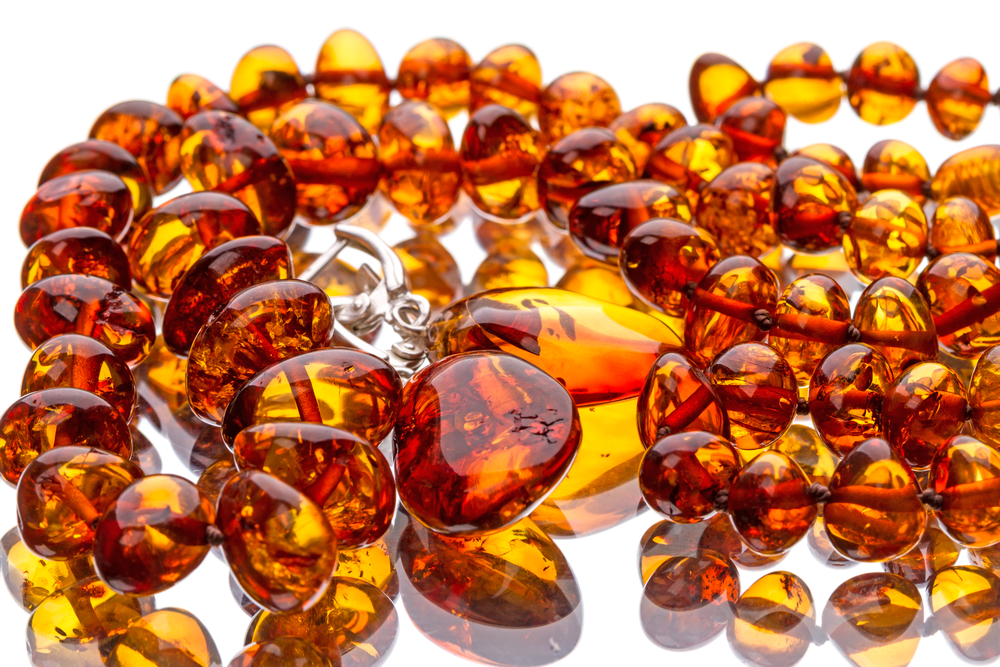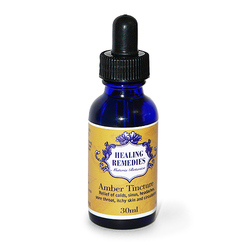
Baltic amber is a resin of coniferous trees from the Pinaceae family which grew in the Northern Europe around Baltic Sea. Amber is a fossilized coniferous tree resin that can be 30 to 90 million years old. Amber forms when sap, which is also called resin, leaks from inside pine trees and becomes fossilized over time by pressure and heat. The oldest and best quality amber is found along the coast of Baltic Sea.
The therapeutic properties of amber are universal and are briefly described in our blog
Natural Amber contains as much as 8 percent of succinic acid. One of the amber properties are its strong antioxidant affect due to the presence succinic acid. The scientific study below demonstrates that succinate administration to a patient with chronic degenerative heart condition may reduce mitochondrial damage to the heart and reperfusion injury.¹
¹Reperfusion injury is the tissue damage caused when blood supply returns to the tissue after a period of ischemia or lack of oxygen (anoxia, hypoxia). The absence of oxygen and nutrient from blood during the ischemic period creates a condition in which the restoration of circulation results in inflammation and oxidative damage through the induction of oxidative stress rather than restoration of normal function.
Amber tincture and amber oil are is available in Australia from www.healingremedies.com.au
Cardioprotective effect of succinate against ischemia/reperfusion injury. Sakamoto M, Takeshige K, Yasui H, Tokunaga K. Division of Cardiovascular Surgery, Research Institute of Angiocardiology, Faculty of Medicine, Kyushu University, Fukuoka, Japan. Surg Today. 1998;28(5):522-8. PMID: 9607905
We investigated the protective effects of succinate, which is a respiratory substrate and a potential antioxidant, on myocardial ischemia/reperfusion injury 1. with the whole heart. Isolated rat hearts were loaded with 25-min normothermic global ischemia followed by 30-min reperfusion in a working heart model. Succinate administered either before reperfusion or added to the cardioplegic solution improved the postischemic cardiac function significantly. The hearts arrested with succinate-supplemented cardioplegic solution replenished high-energy phosphates and 2 maintained the total adenine nucleotides during the reperfusion period, whereas those arrested with succinate-non-supplemented cardioplegic solution replenished the high-energy phosphates less, and also lost total adenine nucleotides during that period. We thus conclude that succinate administered before reperfusion may decrease the degree of mitochondrial damage during reperfusion and thereby reduce the amount of myocardial ischemia/reperfusion injury.
- Reperfusion – the action of restoring the flow of blood to an organ or tissue, typically after a heart attack or stroke.
by Danuta Hulajko
About the Author
Danuta Hulajko is a naturopath, international speaker, founder of the DH Natural Medicine  Clinic and www.healingremedies.com.au , Southern Highlands Sydney. She specializes in cardiovascular diseases, anti-aging, autoimmunity, digestive disorders and heavy metals chelation. For more information please go to our website. You can follow Danuta Hulajko work, events, seminars, expos, latest health research, her health tips and advice on Facebook and LinkedIn
Clinic and www.healingremedies.com.au , Southern Highlands Sydney. She specializes in cardiovascular diseases, anti-aging, autoimmunity, digestive disorders and heavy metals chelation. For more information please go to our website. You can follow Danuta Hulajko work, events, seminars, expos, latest health research, her health tips and advice on Facebook and LinkedIn

